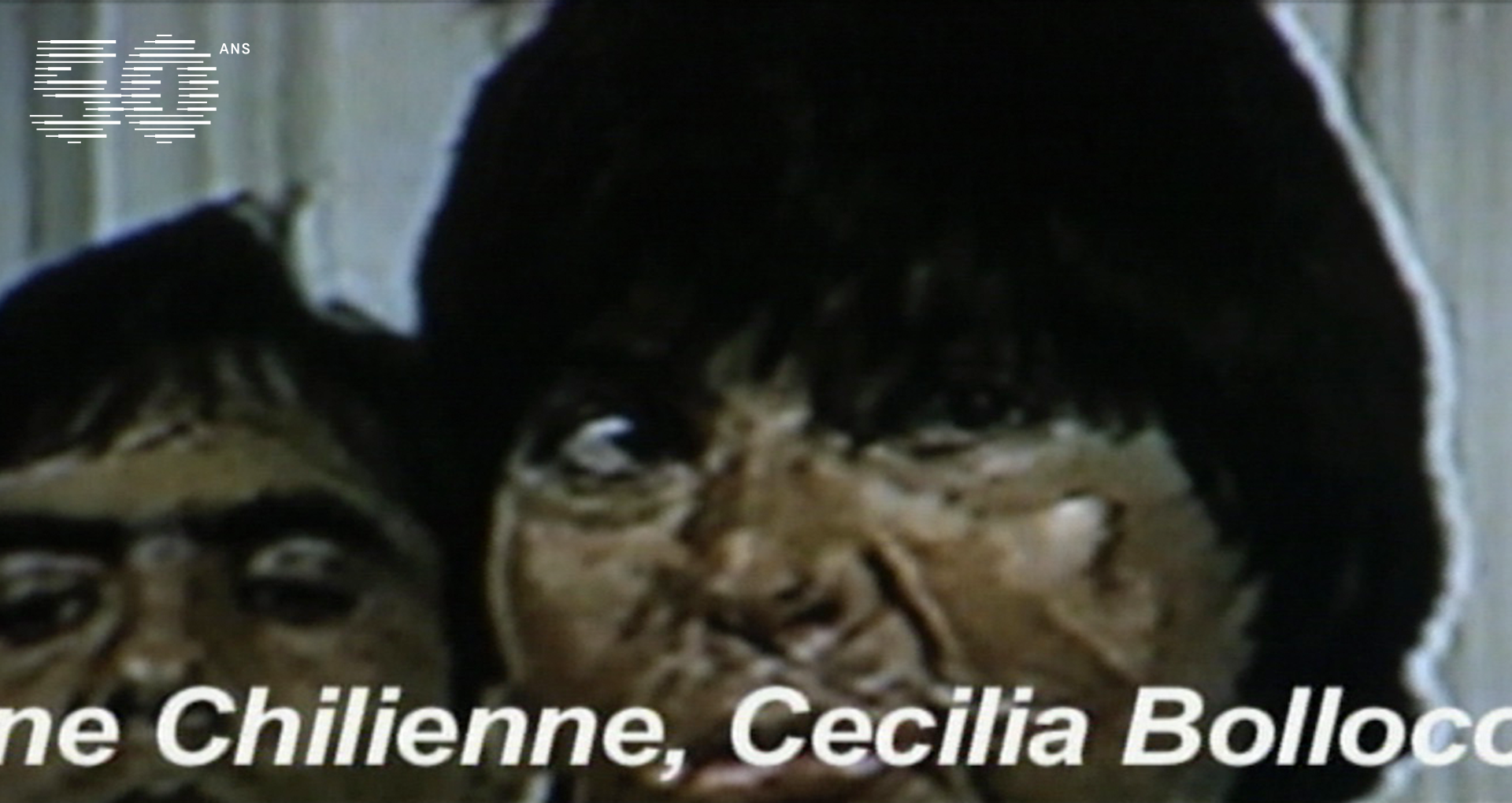
© Eduardo Menz, Les femmes de Pinochet, 2005
Special Program at the RIDM
The Vidéographes – The Duty of Remembrance
PROGRAMMING
From the very beginning of Vidéographe, the political scene has produced works, often made collectively, that are eager to offer an alternative to the official media.
The duty to act in the face of social and political injustices has thus led videographers to produce videos with the aim of raising our awareness. Today, we have a rich tradition of creating and disseminating militant works, especially those that focus on the international and local scene.
PROGRAM
Nayla Dabaji, Intervalle, 2014, 8 min
A fictional character falling down from the sky recalls her/his previous failed attempts to cross the border, which she/he magically survives each time.
Alisi Telengut, Nutag-Homeland, 2016, 6 min
A visual poem and surrealist requiem for the Kalmyk people that were mass-deported by USSR from 1943-1957 and half of them died before they were allowed to return home. The film manifests itself as an archetype with frame by frame hand-painted imagery, bringing back an example of human history on the eternal theme of diaspora and the loss of homeland, but more importantly, by referencing to the past and the lost, it poses a critical resistance to the current social-political situations in the world.
Félix Lamarche, Terres fantômes, 2019, 20 min
An experimental approach, with ghostly and atemporal elements, gives substance to recollections of a disturbing but largely forgotten episode in the history of Gaspésie.
Eduardo Menz, Les femmes de Pinochet, 2005, 12 min
In this experimental short, the viewer is forced to role-play through the repeated employment and alteration of the text, sound, and image until his or her expectations have been truthfully realized. The video examines the class structure, the meaning of beauty, and forgotten history through two very different but significant women during Pinochet’s brutal regime of the late 1980’s.
Pierre Hébert, La statue de Robert E. Lee à Charlottesville, 2018, 26 min
On August 11 and 12, a show of force by neo-nazis and white supremacist groups in Charlottesville, Virginia, to oppose the removal of the statue of General Robert E. Lee, leads to violent clashes and leave several deaths and many wounded. On August 23, the Town Hall decides to cover the statue with black as a sign of mourning. On August 28, we leave for Virginia to shoot the shrouded statue as a departure point for a reflection about the historical and political implication of the raging debate on the fate of the Confederate statues in the USA.




